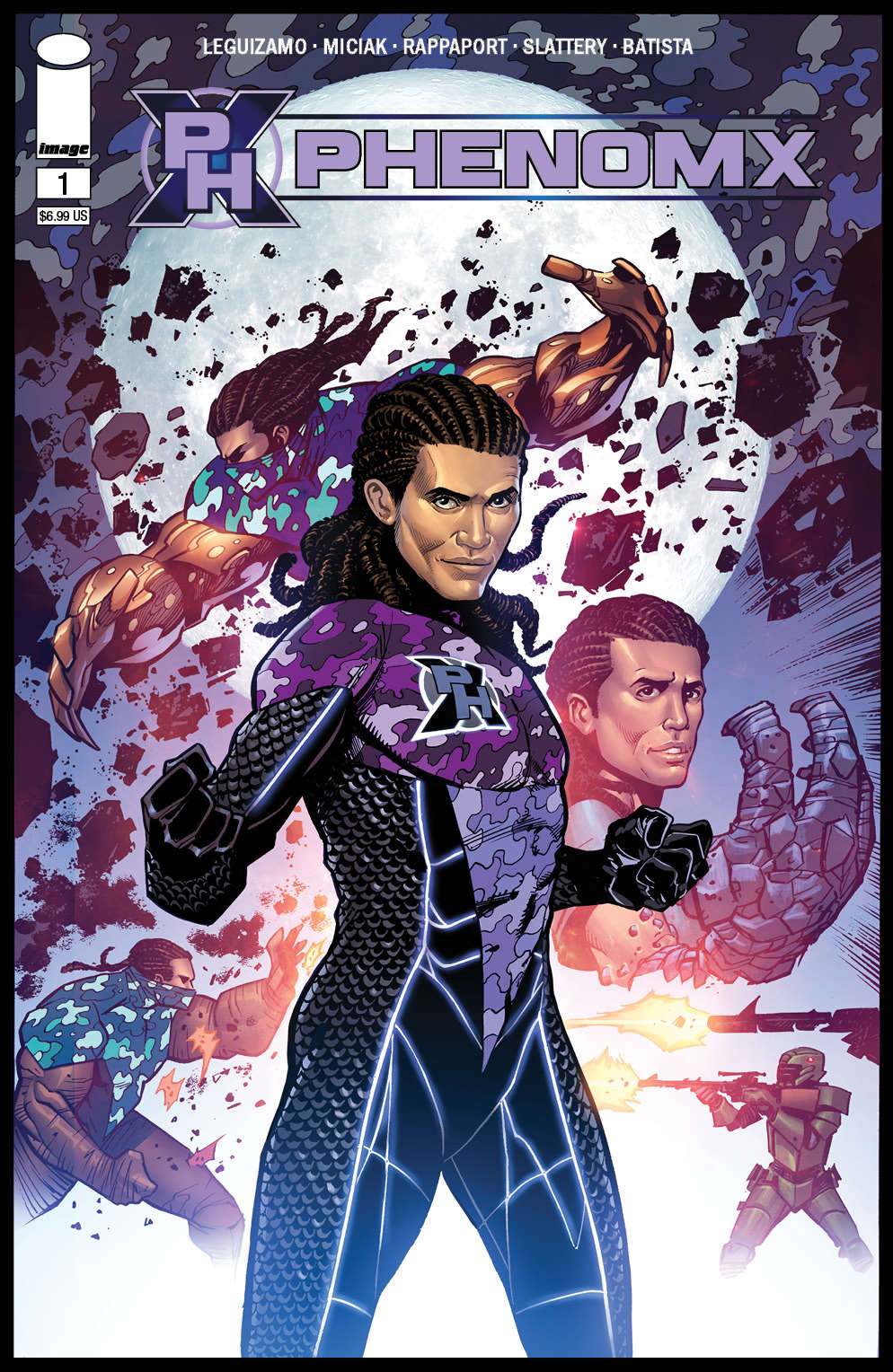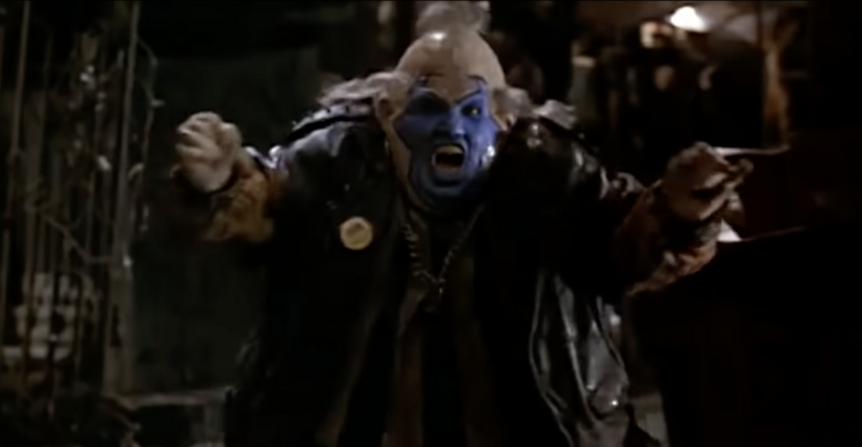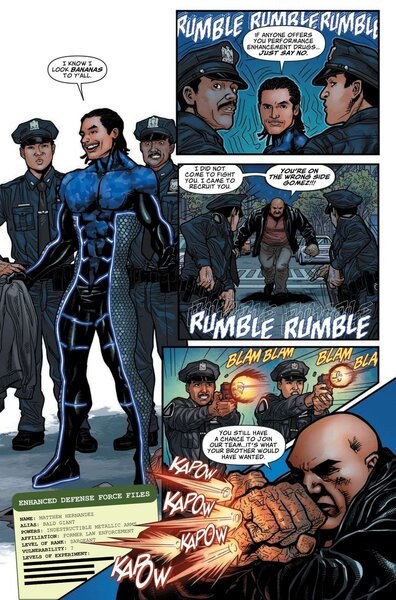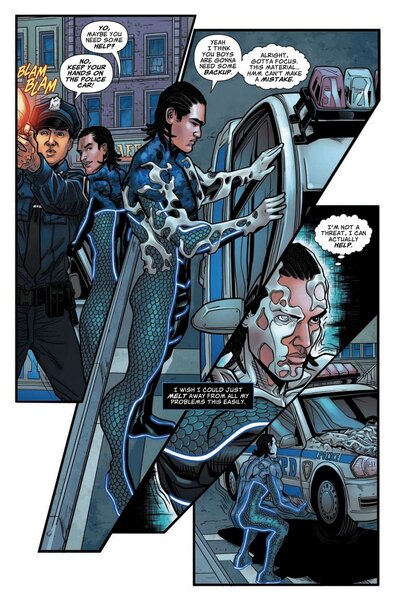Create a free profile to get unlimited access to exclusive videos, sweepstakes, and more!
John Leguizamo wants his new Image Comics series to put Latino culture front and center

The first thing you realize when you talk with John Leguizamo is that the man comes well prepared.
It becomes apparent right from the beginning of our conversation to discuss the upcoming release of his creator-owned comic book, PhenomX, which is the Emmy- and Tony Award-winning actor and playwright’s attempt to introduce his own Latino superhero to comic book readers. PhenomX #1 is an oversized debut issue that will hit comics shops on Nov. 3, under the Image Comics banner and in partnership with Todd McFarlane Productions. Leguizamo co-writes alongside Aram Rappaport, Joe Miciak, and Damian Slattery, with Chris Batista penciling the interior art.
While discussing the impetus for the series, which he initially tried to launch via crowdfunding in 2019, Leguizamo talked of the importance of representation for the minority group that has accounted for more than half the population growth in the United States since 2010. He also offered up several reminders of the impact Latinos have had throughout history.
“The dearth of our storytelling is ridiculous. There’s this myth that [Latinos] just got here,” he tells SYFY WIRE, “But we've been here for 500 years and before that were some of the most powerful empires in the world. The Aztecs, the Incas, the Mayans, the Tainos… we have a lot of great stories. I mean, 500,000 of us fought in World War II. We fought in the American Revolution and helped fund [it]. Nobody even talks about that. Cuba, Mexico, and Spain provided millions to fund General Washington's war. But we don't get any credit.”
“I think comic books is an arena that should be advocating for diversity,” Todd McFarlane says when asked why he agreed to help Leguizamo get PhenomX made. “Not in a heavy-handed way, but just acknowledging that the world is very, very colorful. Here we go. And then we'll see if it works or not.”
Leguizamo and McFarlane became friendly during the making of 1997's Spawn, a film the actor looks back on fondly with the exception of the prosthetic makeup he endured while portraying The Clown. “The costumes were prehistoric back then. Now the prosthetics are made out of silicone. They're lighter. They're more flexible,” he recalls. “Those old prosthetics were so hard. I had blisters on my face, I had puss. My face was so painfully irritated, and I lost so much water weight. It was really hard, but it was such an exciting character to create that it didn't matter how much pain I was in. It was just so thrilling to be The Clown, just getting up every morning and being able to say these crazy, fun, weird, fun lines. It was a highlight of my life.”
McFarlane, who as many people know continues to plod along with his attempt to get his new Spawn movie into production, says if/when his fabled directorial project finally happens, he hopes to be able to work in a cameo for Leguizamo, sans painful prosthetics. “Remember at the end of the movie Split, when they pan to the diner and there was Bruce Willis?” he says. “I just thought it was super cool. We can do the same thing. And if we do it right, half the crowd will cheer, and the other half will be like, 'what the hell?'”
It was a chance meeting in artists' alley during the 2018 New York Comic Con when the actor first told McFarlane about his idea for a Latino superhero. “Todd is a legend and… I knew I only had one shot with him and the opportunity came and I met him at Comic Con and we reconnected and the dude is so cool and so generous and chill,” Leguizamo remembers. “So I sent him the comic and he read it and liked it.”
“It’s no Spawn, but I’ll take it,” is what McFarlane jokes he told Leguizamo after reading his script.
Turning serious, the comics legend said he broke down the story and went over the good parts, and identified wrinkles that needed to be ironed out. Most important, McFarlane says he talked about the great chasm of difference between what it takes to make comics and what it takes to make movies and television. “We talked about the madness of producing comic books work-wise. I mean, away from creating, there's a whole other process of just getting books to the printers,” he says. “That’s not an insignificant part of the equation, and I wanted to make sure that he was ready for all of that, or at least his team was ready for all that.”
It was important to Leguizamo to make this comic alongside fellow Latinos so he partnered with veteran artists such as Edgardo Miranda-Rodriguez, creator of the Latina superhero La Borinqueña, Chris Batista, and Jose Marzan Jr. to bring the story to life. Aside from contributing cover art for a variant edition of the first issue, McFarlane isn’t involved with the creative aspect of the series, a notable change from his hands-on work with his own Spawn franchise.
“It’s John’s idea. My job is to help sort of keep it within the guardrails,” McFarlane says. “I’ll say, ‘Hey, you don't want to go out of bounds here and here, but otherwise you guys are doing all the driving here, and let's just see if this sticks.” And by the way, it's cool because I can deal with a friend, and there’s nothing wrong with that. If you're going to spend time with people, might as well do it with people you like, and John has a voice that I think needs to be heard.”
Leguizamo is a gifted writer who has written screenplays, stage plays, and even a memoir. He also adapted his one-man stage show Ghetto Klown into a graphic novel with artist Christa Cassano. But he says writing PhenomX required a vastly different approach, so he leaned on McFarlane's expertise to make sure the story he wanted to tell was effectively translated to the comics medium.
“He's being humble about it, but Todd’s tutorials were a masterclass in writing for comic books. He gave me a lot of useful nuggets, like how to make the sentences as brief as possible. I tried to do that as often as I could, and also to not finish every thought and leave some somewhat unfinished,” Leguizamo adds. “That was a great trick that I'm trying to put it into my own playwriting and screenwriting. And he also helped me with important things like the last two pages of the fifth issue, what to do with those last two pages. That was a big awakening for me to create that perfect cliffhanger that will make people come back for the next five issues, the next 10 issues, next 15 issues.”
PhenomX centers on the character Max Gomez, who was wrongfully imprisoned and is desperate to regain his freedom. Max agrees to take part in off-the-books government experimental trials, which wind up giving him shape-shifting abilities. Max soon realizes his newfound freedom comes with a caveat. He’s given superpowers to help fix the government’s mistake — their attempt to create a department of super-cops went terribly wrong and created a group of incredibly dangerous threats. Max has to go and bring them in.
(FYI, do not expect to see a certain Hellspawn or Sam & Twitch make cameos in PhenomX. It is not part of the Spawn universe, per McFarlane.)
While each season — Leguizamo uses TV terminology to describe each story arc — will focus on a different theme, the first arc will be focused on the police and Max’s efforts to clean up their mess. “The radiation they put these [test subjects] through to turn them into superhumans had a side effect of turning them into sociopaths,” Leguizamo explains.
One of the influences he cites for his story was George Romero’s Night of the Living Dead and how the zombie classic provided a subversive take on American society. “I wanted to follow in George Romero’s footsteps so PhenomX has a lot of social commentary, from Max Gomez being innocent and being jailed and being profiled racially,” Leguizamo says, adding that the comic will also weigh in on the disproportionate number of Latinos who are incarcerated in the U.S.
Times and perceptions change, albeit slowly. But with more than 60 million Hispanics now in the U.S., there is no denying the importance of the Latino community and the influence it has on American society. The bottom line is, representation does matter. People have every right to want to see their reflections in the culture they absorb and support. I'm a first-gen Cuban-American who grew up loving comics despite never seeing anyone that resembled the people in my family and my community. I remember seeing George Perez's name in the credits of an Avengers book and being so happy to see a Latino name being responsible for creating one of my favorite books. You don't realize how important that is until you finally see it in front of you. The issue of diversity is about identity, about wanting to feel like you're being seen and not just invisible to the rest of the world.
And not to make it all about money, but diversity also happens to be simply good business. “Here we are now in 2021 and things are changing and people understand that you need to have Latin representation because we're here,” Leguizamo adds. “We contribute $260 billion in taxes. We add $2.6 trillion to the GDP in the U.S. [as of 2018]… that would make us the 11th largest economy in the world.”
How long PhenomX goes will ultimately come down to what determines the fate of 99.9 percent of the comics out in the market — whether or not readers buy it. But if it does find an audience, Leguizamo says he has already mapped out the next two story arcs. Until then, he’s just excited to finally see his dream of introducing his Latino superhero to the world, telling his story on his terms.
“I mean, how exciting is it that we can control our own narrative as LatinX people now?” he says. “For so many decades, others have controlled our narrative. Now here we are. We're a force, a power, and our stories need to be told.”
_____________________________________________________________________________________________________________________
Let's talk comics! Find me on Twitter/Instagram and let me know what's on your pull list.
The views and opinions expressed in this article are the author's and do not necessarily reflect those of SYFY WIRE, SYFY, or NBCUniversal.




























